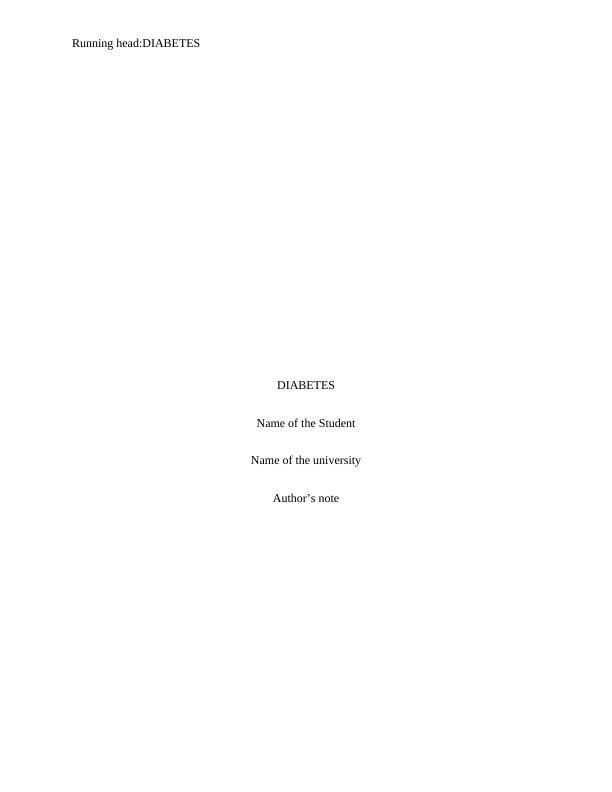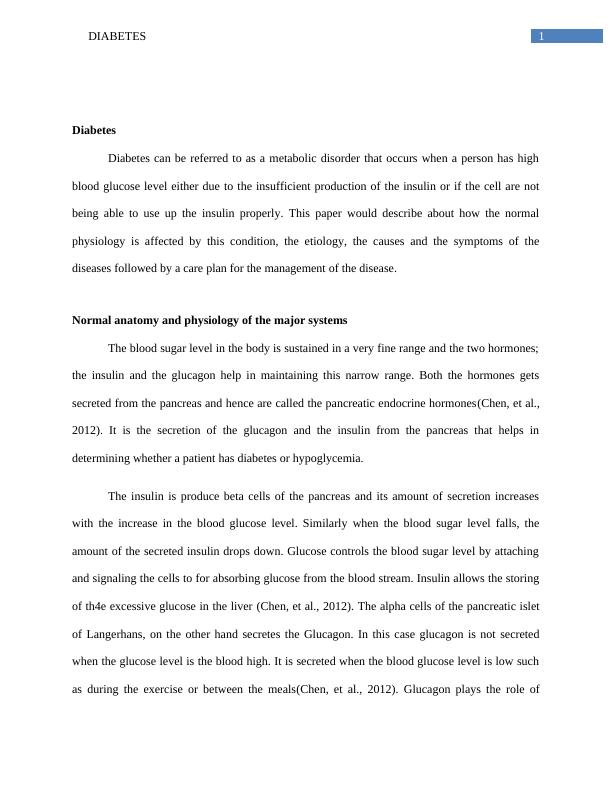Diabetes: Anatomy, Physiology, Causes, Symptoms and Management
This is the grading rubric used by the instructor for your research paper. It includes sections on the introduction and body of the paper, as well as instructions for using end notes and APA format for references.
9 Pages1720 Words317 Views
Added on 2023-06-10
About This Document
This paper describes the anatomy, physiology, causes, symptoms and management of diabetes. It explains the normal physiology of major systems, etiology, risk factors, and body systems affected by diabetes. The paper also includes a care plan for the management of the disease.
Diabetes: Anatomy, Physiology, Causes, Symptoms and Management
This is the grading rubric used by the instructor for your research paper. It includes sections on the introduction and body of the paper, as well as instructions for using end notes and APA format for references.
Added on 2023-06-10
ShareRelated Documents
End of preview
Want to access all the pages? Upload your documents or become a member.
Homeostatic Changes and Treatment of Diabetes Mellitus
|7
|2534
|492
Endocrine Study For Human Assignment
|5
|737
|21
Anatomy and Physiology of Diabetes: Symptoms, Treatment, and Impact
|8
|2524
|34
Pancreas Answer 2022
|3
|1473
|31
Assignment On Biochemistry
|4
|867
|22
Biochemistry. 1 Biochemistry by. Course: Tutor: Univers
|3
|389
|58



